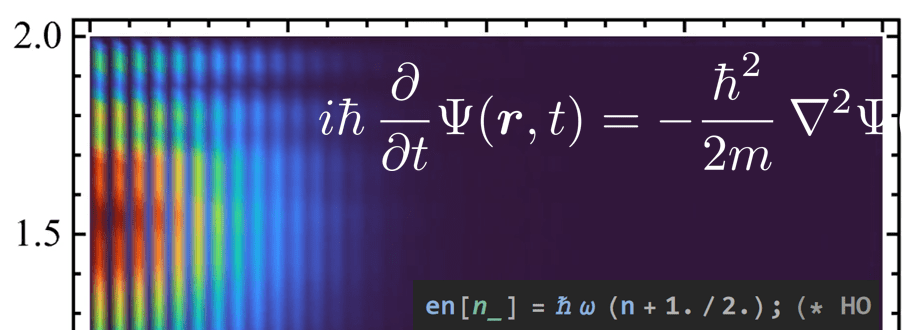The energy eigenvalues and eigenfunctions of the harmonic oscillator (HO) are analytically known. Deviations from the quadratic potential lead to shifted eigenvalues and modified eigenfunctions. One can calculate them approximately using perturbation theory if the deviation from the HO potential are small. In any case, one can calculate the changes using a "lattice" in space. The discretized Hamilton operator is a nxn matrix and the eigenfunctions are the n-dimensional eigenvectors.

Energy shifts

This picture reveals a few general properties: The anharmonic potential is larger for larger |x| than the HO one. States are therefore more "confined" to a smaller region in space, leading to an increase of the energy (). We also observe that the corrections up to second order (1+2) are closer to the (almost) exact lattice solutions (solid lines) than the first-order corrections (1).
Modification of wave functions
As mentioned before, the chosen potential "squeezes" the wave functions into a smaller space. We illustrate this for the second excites state (n=2), for which this effect is larger than for n=0 and n=1:

Next, we show the changes of wave functions with respect to the harmonic oscillator, calculated in perturbation theory and with the lattice method:

Finite-volume effects
While the discretization of the Hamiltonian allows in principle for an exact calculation, in practice the calculation can only be carried out on a lattice of finite size L. In three dimensions, this would be a cube of side length L, hence we will refer to this as finite-volume effects from here on, even if we stay in one dimension. The impact is illustrated below. For the picture, we choose Dirac boundary conditions, i.e., an infinite potential setting in at . This forces the wave function to zero at the boundary.

The finite-volume effects play an important role in lattice Quantum Chromodynamics (lattice QCD). The latter is a numerical method to solve the Hamiltonian of the strong interaction in a small volume. In the above example, the difference to infinite volume for the energy eigenvalues is small () but non-negligible. The main property of finite-volume effects for bound states is that they are exponentially suppressed. We check this behavior for the above example:

